The working fluid in the power steering system is not changed during operation.
But if the liquid has become very dark, then you need to replace the liquid and check the operation of the power steering pump.
It is possible that the power steering pump is failing and needs to be replaced.
Preparing the car for the task.
We raise the front of the car until the wheels are off the surface of the site and set it on supports.
We release the fuel pressure so that the car does not start when the power steering system is pumped.

Weaken the clamp of the power steering supply hose by squeezing the bent ears of the clamp with pliers
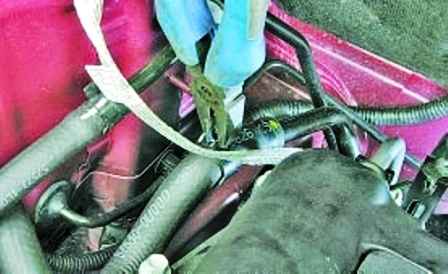
Slide the clamp along the hose

Disconnect the hose from the pump pipeline
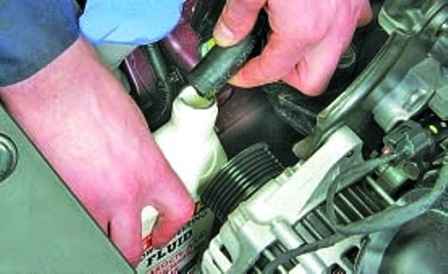
Drain the working fluid from the power steering reservoir into the prepared container

Unscrew the bolt fitting of the pressure pipe
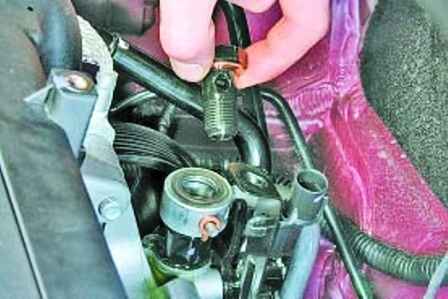
Remove the bolt together with the washer
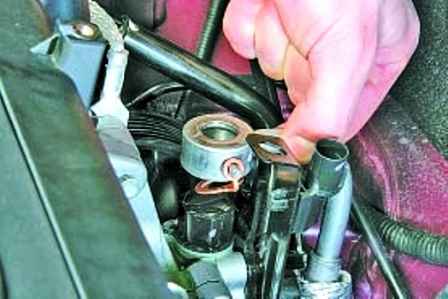
Disconnect the pressure pipe with the washer from the pump
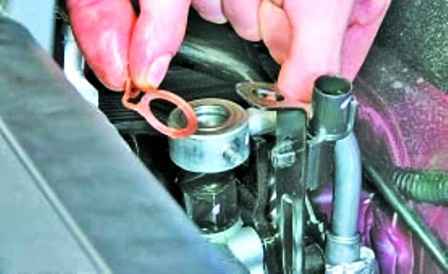
Replacing the sealing washer during assembly
We lower the disconnected hoses into the prepared container
We drain the working fluid from the steering system, turning on the starter two or three times and turning the steering wheel in both directions until it stops
We connect pipelines and hoses to the power steering pump, fill the fluid into the reservoir and bleed the power steering system
Bleeding power steering
The need for pumping occurs when air enters the hydraulic system during a fluid change, repair work, or when the seal is broken during operation.
A sign of the presence of air in the system is the wedging of the steering wheel when trying to make a sharp turn.
In addition, the pump makes an increased noise when the steering wheel is turned, and the liquid in the tank usually foams.
The presence of air in the power steering system leads to premature failure of the power steering pump.
To bleed the power steering system, do the following.
Pour working fluid into the hydraulic booster system up to the “MAX” mark on the reservoir wall
Disable the fuel pump by disconnecting the wiring harness connector from it
Engaging the starter for 10–20 seconds, turn the steering wheel five or six times in both directions until it stops.

During pumping, add fluid to the tank: its level should not fall below the minimum level.
Connect the fuel pump and start the engine.
Turn the steering wheel fully in both directions until there are no air bubbles in the fluid in the power steering reservoir.
Check that the fluid level in the power steering system reservoir barely changes when the steering wheel is turned to either side.
If the fluid level changes by more than 10 mm, and rises sharply when the engine is stopped, re-bleed the system.
Replacing the power steering reservoir
We replace the tank if it is very dirty or its filter has become unusable
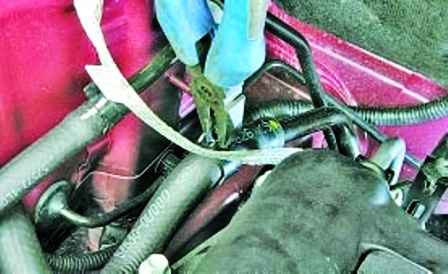
Squeeze the ears of the fastening clamp and slide it along the hose

Disconnect the supply hose from the pump pipeline

We drain the working fluid from the hydraulic booster reservoir into the prepared container and connect the hose to the pipeline

We press the fasteners of the power steering tank

Remove the tank
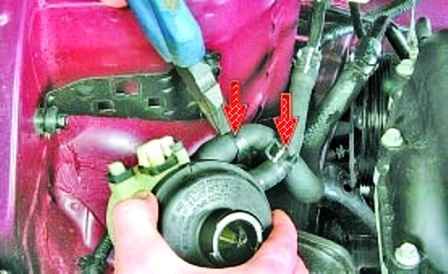
Squeezing the bent ears of the fastening clamps, we move the clamps along the hoses
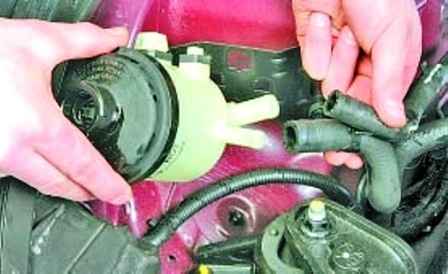
Disconnect the supply and return hoses and remove the power steering reservoir
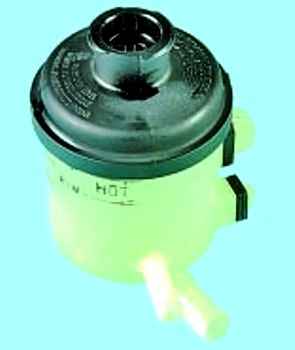
Install the tank in the reverse order and add liquid to the maximum mark.
If necessary, we pump the power steering system.





